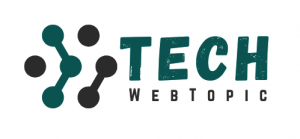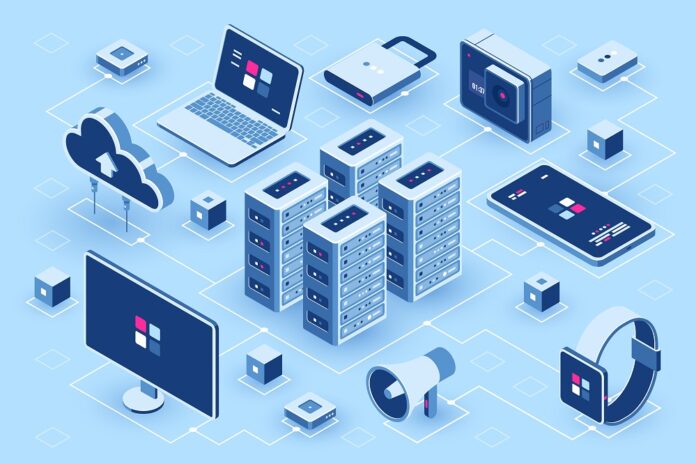In the evolving era of technology staying ahead of trends and a system is a necessity and an effective strategy for marketing and business. More and more innovative innovations and technologies are being developed as we approach the year 2024. This technology needs a network for its functionality that’s where edge computing comes into action. In this blog, you will be diving deep into the field of edge computing and its application and importance. So let’s start the journey of Edge Computing.
What is Edge Computing and How does it work?
Edge Computing refers to the practice of processing data as close to the data source to overcome high latency and low bandwidth. Simply, edge computing means shifting the running process in the cloud to any local area such as users’ PCs, IoT devices, edge networks, or edge servers.
Edge computing works by distributing computing data closer to the data source and end user, reducing the reliance on centralized data centres or cloud servers. The heavy data process is done by the cloud server that can reduce device latency so what it does is lower data traffic on the cloud server by using an edge device that comes in-built with your devices. Edge computing is scalable and flexible, allowing for easy deployment and updates to meet specific application requirements.
Advantages of Edge Computing
Edge computing offers numerous benefits such as:
- It reduces latency as it processes data closer to its source
- It reduces the number of data transfers from the device to the server resulting in enhanced security
- It provides real-time data analytics
- It is cost-effective as it has low bandwidth and low storage requirement
- It improves responsiveness, speed, and overall service
Edge Computing Devices
Edge computing devices are hardware components that support edge computing tasks and applications. These devices are put together closely to the data source. Here are some of the most used edge computing devices in 2023:
-
IoT(Internet of Things) Device
Internet of Things(IoT) devices are hardware components such as sensors, actuators, and small computing units. In the present year 2023, IoT edge computing devices are mainly used to solve latency issues with the cloud that are mostly present on the devices we use.
-
Edge Servers
Edge servers are powerful computing devices that are installed at the edge of a network. They can handle advanced processing tasks and help communicate on-site network and off-site networks. Its main use is to reduce bandwidth requirements and latency in 2023.
-
Smart Cameras
In 2023, edge computing has increased the use of cameras for surveillance and video analytics. The great thing is that with edge computing, all this analysis can happen right on the camera itself. There’s no need to send the data to a faraway server for processing. This means that the analysis can be done quickly and without any significant delays.
-
Edge Storage Device
Edge storage devices such as Network Attached Storage(NAS) systems and Solid State Drives(SSD) are used to store and manage data locally at the edge of the data source. This can be valuable for applications that require immediate access to data or for redundancy in case of network failures.
Trends in Edge Computing 2023
Most businesses have applied edge computing to depend less on centralized servers for data transmission as it can lead to high latency which can lead to business loss. In 2023, the field of edge computing is getting many noticeable trends that describe current innovation and technology of edge computing. Here are some trends in edge computation for 2023:
-
5G integration
5G Technology processes data much faster and can deliver ultra-low latency which is in high demand by many users. Its application includes self-driving automobiles, metaverse, etc. Although edge computing itself provides low latency, 5G edge computing will further reduce latency with reduced bandwidth requirements. This will lead to many business successes and get ahead of competitors. This might also be the key for virtual reality(VR)/augmented reality to unleash its full potential in real-like experiences in video and games.
-
Edge-To-Cloud Synergy
Edge computing and cloud computing are relatable to each other. Edge computing will not be able to replace cloud computing. However, edge computing will be working together with cloud computing for better and more effective results. In this synergy, the data can be processed locally for low-latency tasks at the edge while utilizing the cloud for storage, analytics, and non-time-sensitive processing.
-
Cybersecurity At The Edge
Edge computing is being used everywhere from mobile phones to servers. There are countless sensors that are used in this era for multiple purposes with higher risk and the probability of cyber attacks is highest. So, the role of cybersecurity comes into play. Edge computing security provides data encryption, device security, secure bootstrapping, and AI security edge computing can be much more safe and secure.
-
Edge AI And Machine Learning
Edge AI and machine learning are the biggest trends in the evolution of edge computing. The trend of AI and machine learning is already a growing factor. With the help of AI and machine learning edge, learning edge computing can get up to new heights. These trends can highly affect business as they can reduce processing time, faster decision making, and reduce costs.
Applications of Edge Computing In Various Industries
-
Healthcare
Edge computing within the healthcare sector includes moving computational resources and data processing systems closer to the source of medical data for quick data analysis, thereby increasing the chance of survival of lives. This helps to enhance remote patient care, efficient workload, accurate diagnosis, and lowering the cost. For example- SD-WAN(software-defined wide area network), optimizes WAN management by separating logic and setups from the underlying hardware. This liberates healthcare organizations from the limitations of traditional WAN.
-
Retail
In the present era of globalization, the integration of edge computing and retail is very important. Edge computing will allow us to analyze data closer to the source rather than in a centralized system. It can improve user experience and customer service which allows for a more personalized shopping experience. It can help to track POS, short for point of Sales and E-commerce transactions in real-time. It can also be used to identify any threats in the retail environment, to make the network more secure.
-
Industries IOT(Internet of Things)
Food products, tech accessories, cosmetics, furniture, etc. are mostly manufactured in industries. More innovative innovations and technologies are being developed as the year 2023 draws closer. These industries use Internet of Things(IoT) devices to improve the overall production time of products. Using industrial edge computing devices on machines and robots will increase production without any flaws. By incorporating industrial edge computing devices into machines and robots, production can be further optimized, ensuring flawless and efficient manufacturing operations.
-
Smart Cities
Development is taking a much faster pace and the population is also estimated to rise up to 60% by the year 2050 in urban areas. The Internet of Things(IoT), artificial intelligence(AI), and machine learning have been used in many smart cities which can help people sustain their quality of life. Edge computing can be a huge advantage in such crowded areas. Its uses can be seen in traffic signals, automated utilities, smart cameras(for security), and transportation. It can also be used by people who can leverage real-time data and analysis which provides effective and efficient service. It can also prevent the risk of sensor failure and loss of connectivity.
Challenges and Concerns
In spite of having numerous benefits edge computing faces challenges such as device management complexity, data synchronization issues, and some security concerns. Ensuring consistency and security in distributed computing environments remains a significant challenge. The network bandwidth, management and control of protocols, and data accumulation can also be a huge obstacle in edge computing. It also requires constant maintenance for a software update for smooth operation. It also has a far more intricate structure than the cloud, which incorporates modern technology, making maintenance possible only by highly qualified personnel.
Conclusion
In conclusion, To sum it up, edge computing has emerged as a versatile and valuable technology in 2023. While there are still challenges and areas that require maintenance, its potential for growth and improvement is evident. According to experts from CDR Writer Australia, one of the significant advantages is its impact on developing areas, where low latency and cost-efficiency are crucial factors. In this era of the rapid technological advancements, edge computing devices like smart cameras, IoT devices, and edge servers are taking center stage. They facilitate real-time analytics, enabling businesses to make informed decisions and process data effectively. Looking ahead, it’s clear that edge computing will continue to evolve and reshape various industries, ushering in a future where instantaneous data processing and seamless connectivity become the norm. So, prepare yourself for a world where the power of edge computing transforms the way we live and work!
We, at TechWebTopic, provide the most actionable How-To’s, Tips and Tricks, Top List, and Hacking Guides in the tech industry. Make sure to follow our website for more informative content.
FAQs
-
How does edge computing differ from cloud computing?
Edge computing runs in an edge server and cloud computing runs in a cloud server or centralized server. Edge computing is developed in such a way that it does not directly run on a centralized server so that it can reduce data traffic and latency.
-
Is edge computing replacing cloud computing?
No, edge computing will not replace cloud computing. Edge computing and cloud computing can work together in a hybrid mode which will be more effective in handling time-sensitive tasks and cloud storage.
-
How is 5G technology impacting edge computing?
5G network is enhancing edge computing by providing ultra-low latency and high bandwidth, enabling faster and more reliable communication between edge devices and centralized systems.
-
Can edge computing be used for environmental monitoring?
Yes, edge computing can be used for environmental monitoring. Edge computing devices such as sensors can provide real-time analysis data of air quality and water quality, providing faster reports of environmental challenges.
*Checked for AI and Plagiarism by Turnitin*


